Abstract
Clinical findings are often based on impression and expressed by verbal descriptions. For their structured documentation a coherent and consistent representation model is demanding. The proposed approach is an attempt to take conceptual graphs as a formal notation for findings. Conceptual graphs are finite, connected, and bipartite graphs consisting of concept nodes that are linked by conceptual relation nodes. Concepts are organized in a type hierarchy. A subclass of conceptual graphs, called conceptual finding graphs, will be introduced that capture descriptive findings with well-defined characteristics. It will be shown, how conceptual finding graphs can serve as a coherent and consistent basis for data acquisition, database storage, and verbalization of descriptive findings. The data entry of findings can be supported by the definition of selectional constraints for conceptual relations. Database storage can be achieved by mapping conceptual finding graphs into a relational database schema. Findings can be verbalized by a text generator which takes conceptual finding graphs as input and produces morpho-syntactic surface structures. The model has been applied to an interactive report generator for bone scan studies. It provides the user with a controlled reporting vocabulary on an adaptive graphical interface, and allows the assembling of complex findings by term selection and combination based on selectional constraints. The entered findings can be stored without loss of structure. A text generation produces acceptable German reports.
Full text
PDF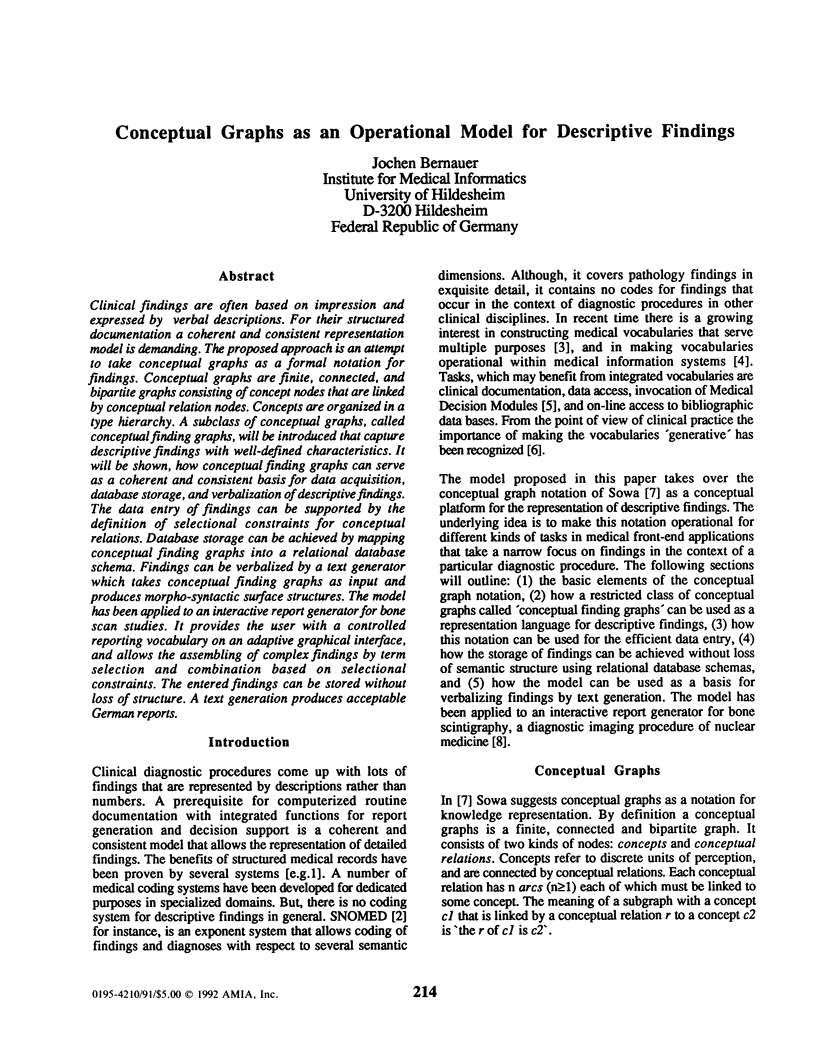
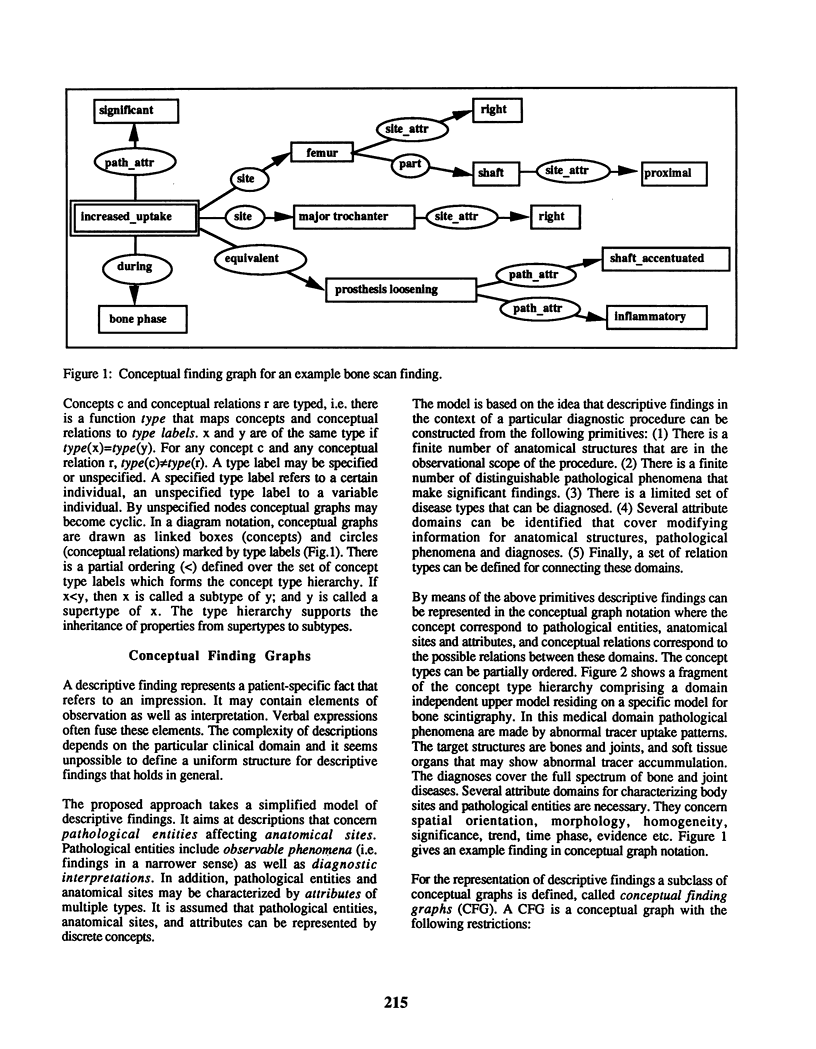
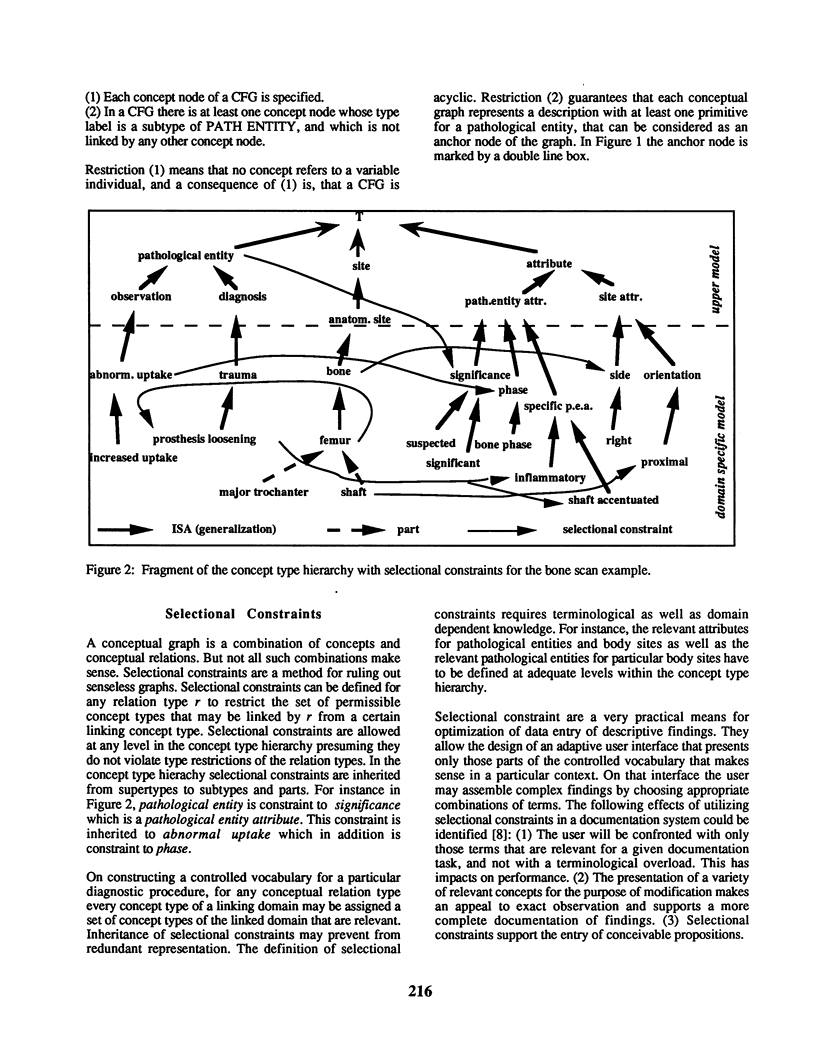
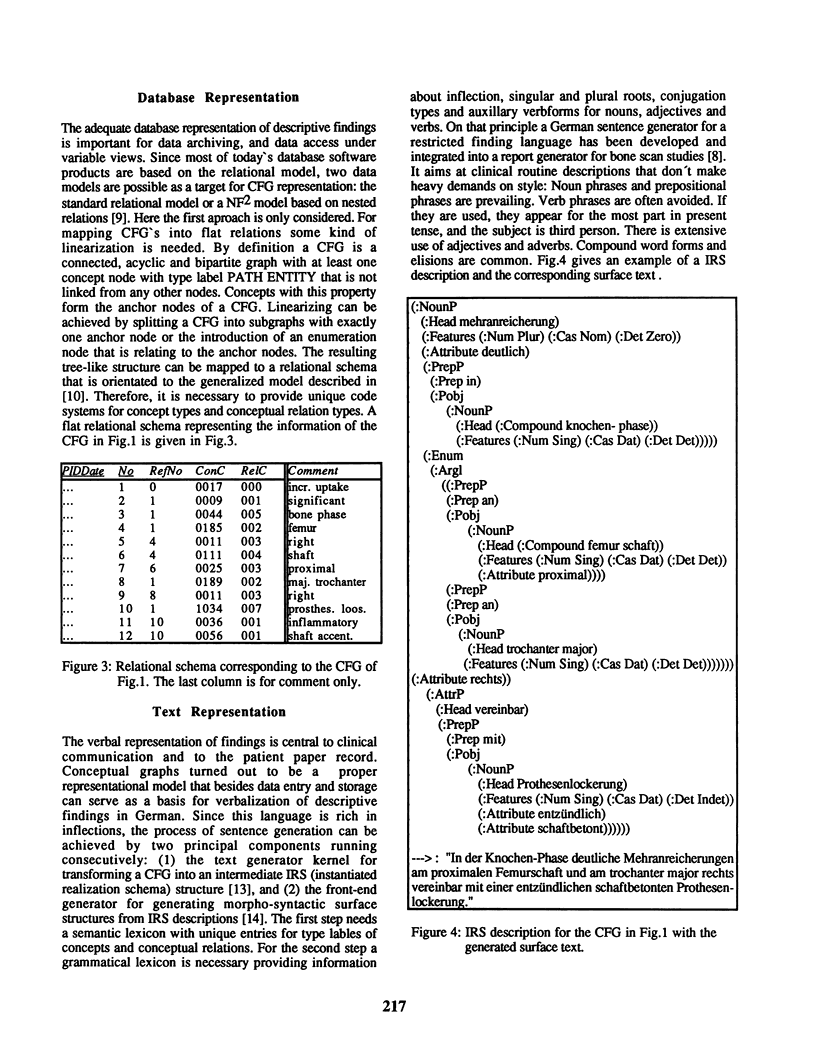
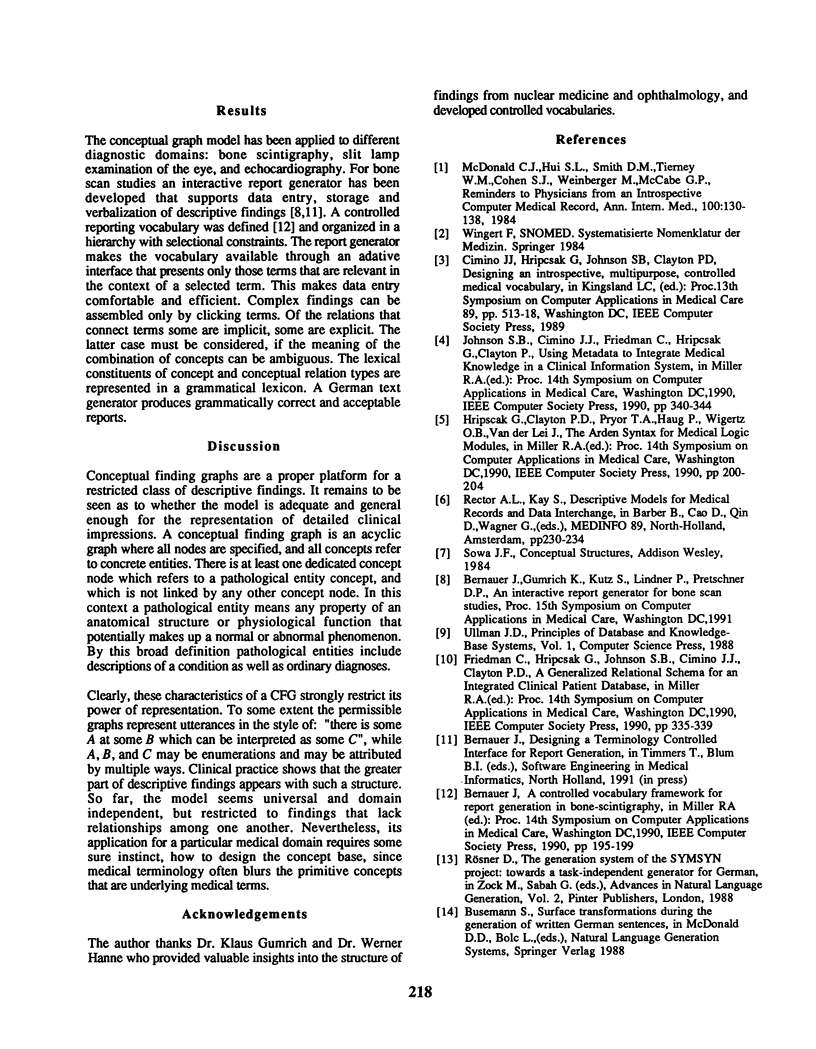
Selected References
These references are in PubMed. This may not be the complete list of references from this article.
- McDonald C. J., Hui S. L., Smith D. M., Tierney W. M., Cohen S. J., Weinberger M., McCabe G. P. Reminders to physicians from an introspective computer medical record. A two-year randomized trial. Ann Intern Med. 1984 Jan;100(1):130–138. doi: 10.7326/0003-4819-100-1-130. [DOI] [PubMed] [Google Scholar]


